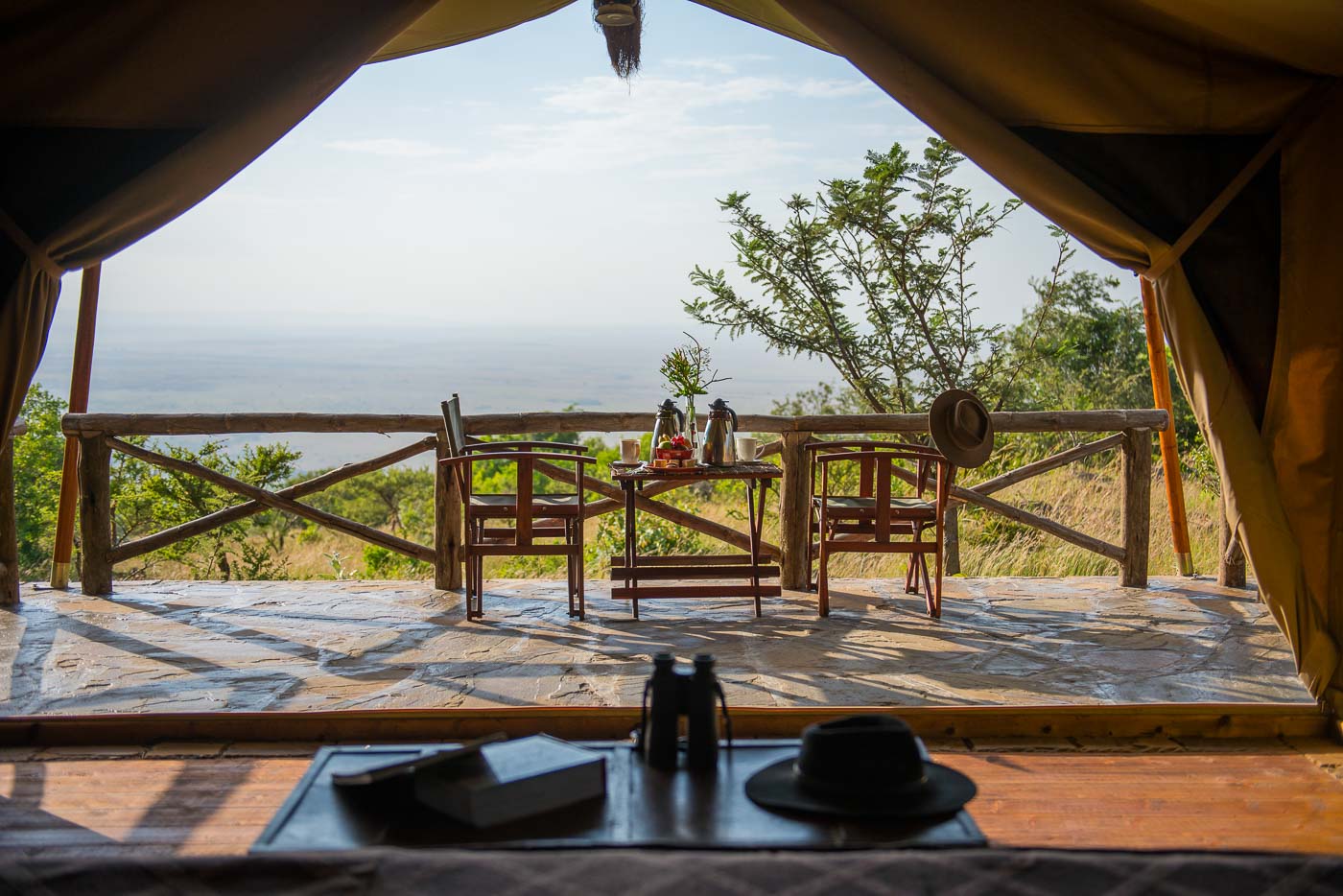One of the many reasons I’m hopelessly devoted to glamping is the eco-factor, a by-product of staying in a natural setting. Having glamped on almost every continent, I’ve yet to meet a chic campsite that isn’t small scale, low impact, or energy efficient—a trend hinting at a green sensibility that’s becoming increasingly important to travelers.
It was during one of my first glamping experiences on a vegetated cay in the middle of the Great Barrier Reef that the chef at the upscale eco-isle pointed out fishing boats in the distance. “Today’s lunch (of pan-fried barramundi) was delivered ashore from one of those vessels”, he explained. Dining fish-to-fork at a table made of local wood has made every other meal (ever) hard to measure up.

Sustainable situations like this are the rule versus the exception when you choose to glamp. Such is the case at the Four Seasons Tented Camp Golden Triangle, where upon arrival I was handed a guava welcome beverage in a cup chiseled from the local forest’s bamboo bounty.
Beyond bamboo tumblers, the luxury retreat also includes elephant treks through a conservancy they set up to rescue the gentle giants from a life of begging and forced labor. In a feel-good twist, a portion of every guest’s room rate is donated to protection efforts.

Across the Mekong River in nearby Laos, Kamu Lodge may be remote, but the modest wilderness escape doesn’t skimp on eco accoutrements. Each of 20 thatched-roof tents is topped in solar panels to light each abode at bedtime, and keep the fan running during hot jungle nights.

At a lower longitude, Longitude 131 to be exact, the namesake resort sets a different example of social and environmental responsibility in the form of extensive consultations with the Aboriginal Areas Protection Authority to support the cultural heritage of the area—only 6 miles from Uluru—as well as the World Heritage Site’s flora and fauna, so precious, the entire 15-tent camp can be dismantled and relocated if need be.

Back in North America, my most recent brush with wilderness lodging took me to the sun-drenched beaches of Tulum, Mexico where at Papaya Playa Project, boho-chic beach bungalows built using local materials go so far as to fashion free-standing towel racks out of wind-swept branches and string. I took a photo in hopes of making a similar structure for a rainy-day DYI project.
It’s incredible how contagious stewardship can be when paired with passion and creativity.









